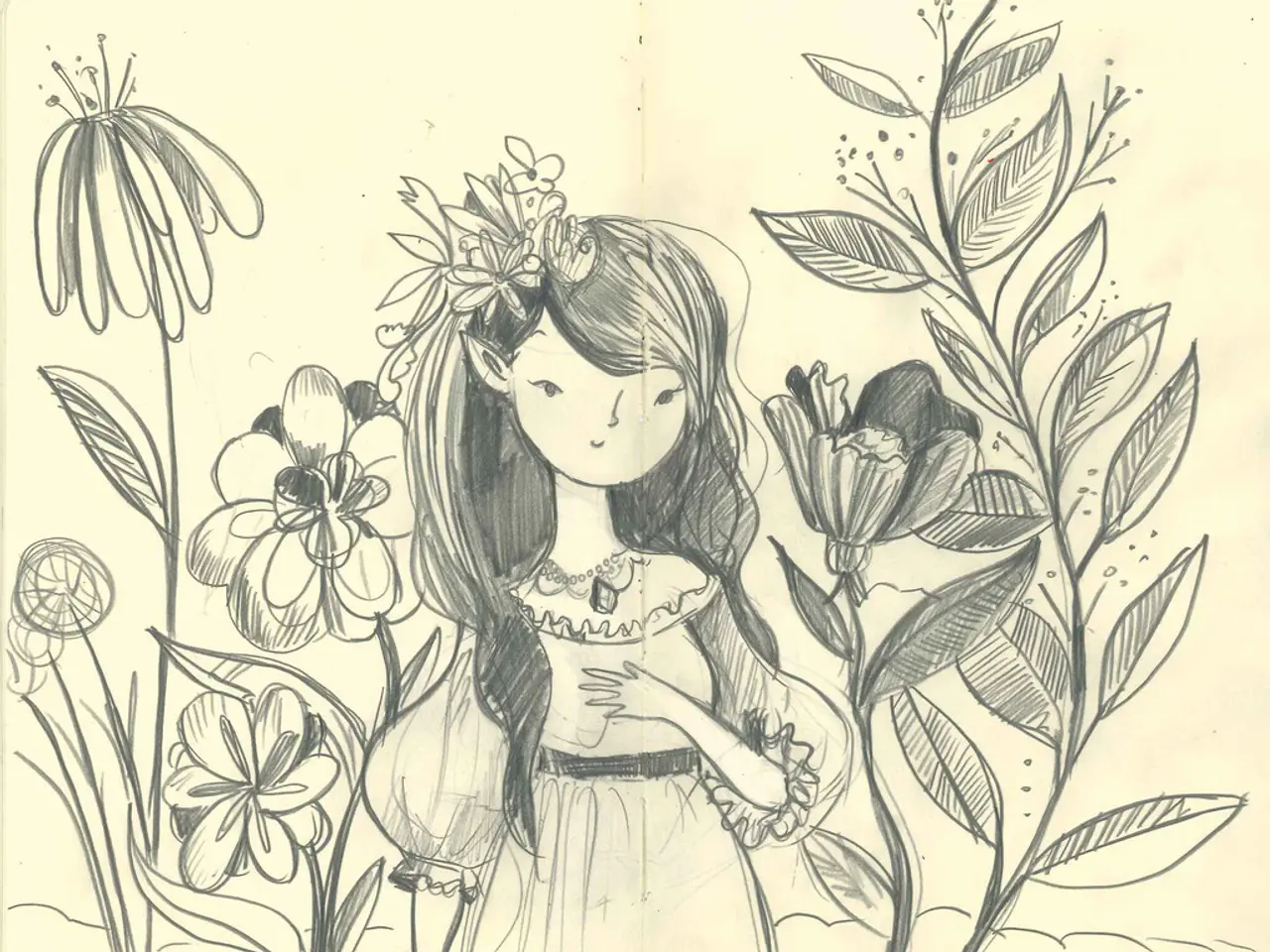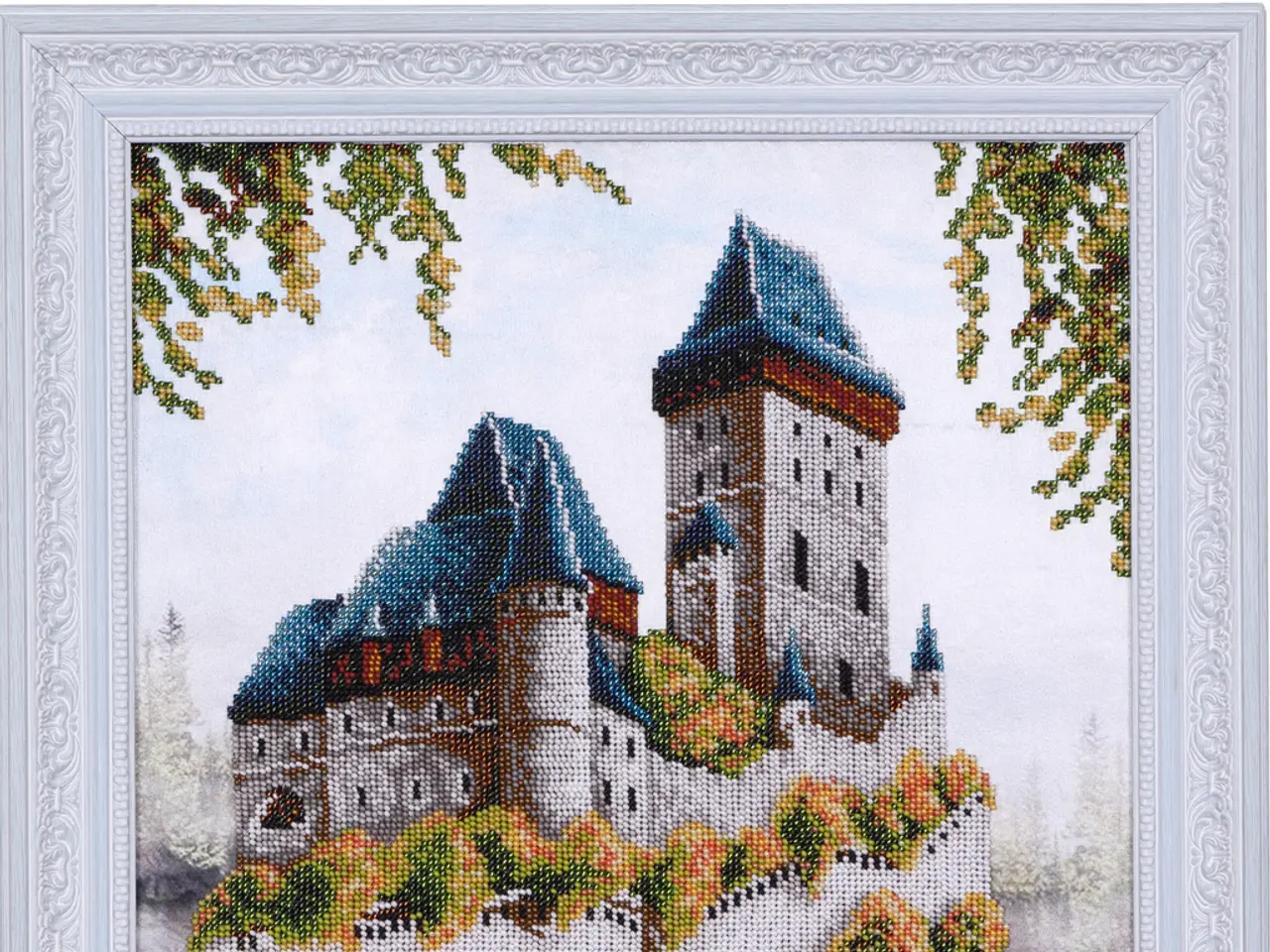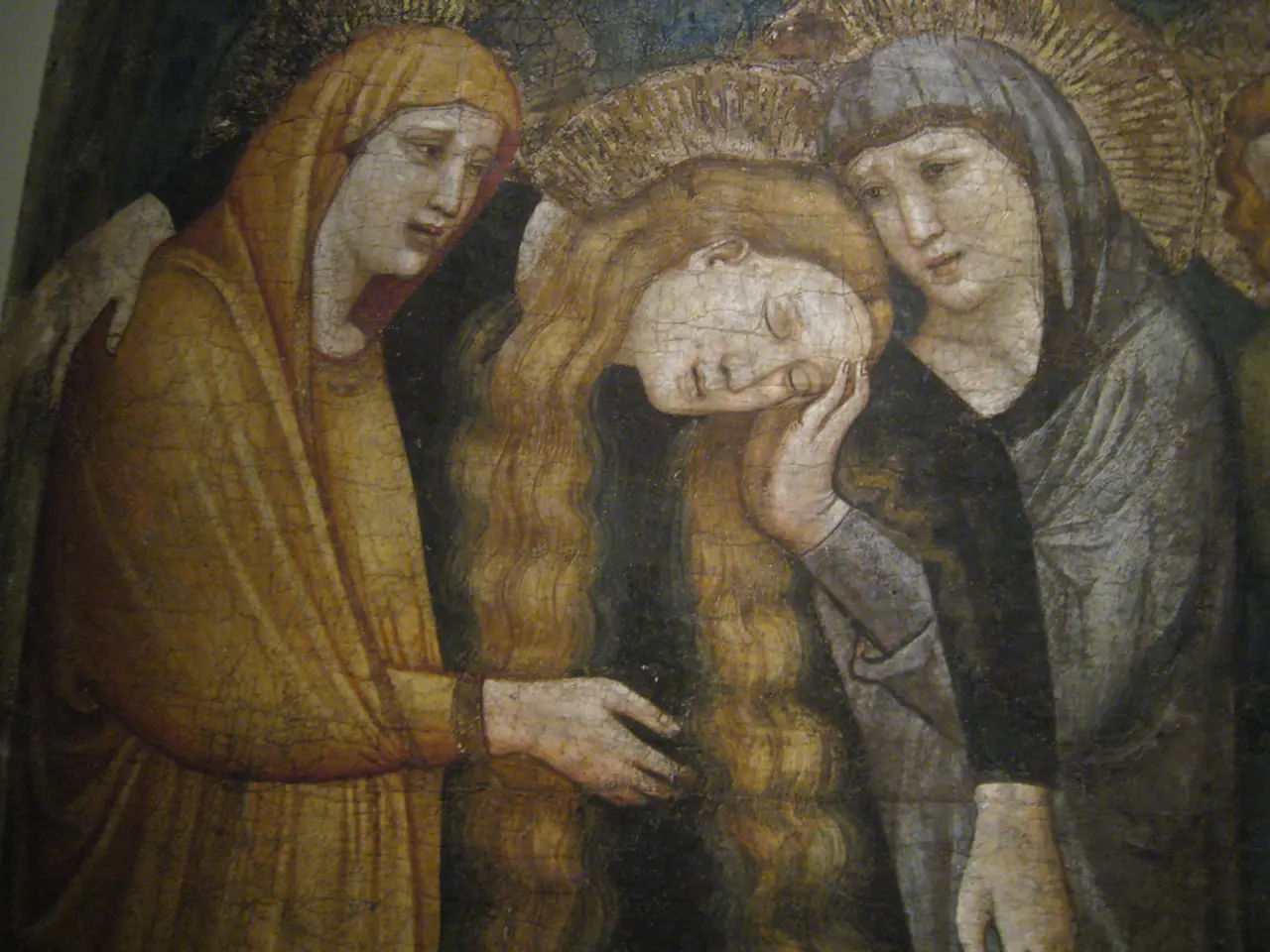Artistic Inspiration: Nature Sketch Concepts for Your Upcoming Artwork
In the realm of art, nature drawing stands out as a captivating and rewarding pursuit. Whether you're a beginner or an experienced artist, there's always room to grow and explore the intricacies of the natural world. Here, we delve into advanced techniques for landscape drawing, flora, fauna, and even mixed media and experimental styles.
For those embarking on the journey of nature drawing, a suitable sketchbook is essential. Opt for a medium-weight paper (around 150 gsm), a spiral-bound design, and a slightly textured finish for optimal results.
Mastering nature drawing requires more than just basic representation. It demands sharp observation, controlled line work, and effective use of color and texture. For instance, when drawing insects and small creatures, precision is key. Observe minute details like wing veining or antenna length, use crisp and controlled line work, focus on proportion and symmetry, and blend light shading and sharp outlines.
When it comes to wildlife portraits, capturing defining characteristics like fur patterns, facial expressions, and posture is crucial. Pay attention to how animals interact with their environment, and use varied pencil grades to differentiate between soft fur and harder features.
For landscapes, employing advanced techniques can elevate your work to new heights. Perspective mastery is one such technique. Utilize multi-point and three-point perspective to create complex spatial environments and dynamic scenes. This includes understanding how vanishing points affect shapes and depth to produce realistic or dramatically distorted landscapes. Incorporate atmospheric and aerial perspective to simulate how distance influences color, contrast, and clarity, enhancing environmental depth.
Depth creation is another essential aspect. Employ overlapping, size variation, and linear perspective to convey layering and distance. Combine these with atmospheric effects such as fading colors and softened edges in the background for immersive realism.
Texture and material rendering are crucial for suggesting varied natural surfaces. Apply systematic mark-making to depict rough tree bark, flowing water, rocky terrain, or reflective water surfaces. Use translucent and reflective rendering techniques for elements like water bodies or wet leaves to increase realism and complexity.
When drawing flora, focus on shape, structure, and value to capture the botanical form accurately. Detailed studies and layering techniques can enhance the lifelike quality of flowers. Utilize dynamic layering, glazing, and washes to depict the subtle color transitions and transparency in floral subjects. Experiment with varied brush strokes or pencil textures to differentiate leaf surfaces, petal softness, and stem roughness, giving each plant part a distinct tactile character.
Incorporating mixed media and experimental styles can add a unique twist to your nature drawings. Combine media like watercolor, acrylics, and colored pencils to build rich textures and depth. Use acrylics for bold color and texture foundations, then overlay with fine pencil details or ink for precision. Experiment with palette knives and unconventional tools for acrylic landscapes to create tactile surfaces and dynamic effects that simulate natural elements like rocks or foliage.
Blend traditional drawing with digital illustration to explore new textural and compositional possibilities, or mix realistic rendering with abstract forms for a modern interpretation. Experiment with media that can simulate light and transparency, such as layering thin watercolor glazes or using gel mediums with acrylics to mimic water reflections, creating dramatic visual effects.
In conclusion, these approaches elevate nature drawing beyond basic representation, merging observational skill with creative media use and experimental methods to produce compelling and professional artwork. Whether you're a beginner or an experienced artist, these techniques will undoubtedly enrich your nature drawing journey.
[1] "Advanced Nature Drawing Techniques: Landscapes, Flora, and Fauna." (2021). [2] "Mastering the Art of Nature Drawing: A Comprehensive Guide." (2020). [3] "Perspective and Atmospheric Effects in Nature Drawing." (2019). [4] "Nature Drawing for Beginners: Essential Tips and Techniques." (2018). [5] "The Expressive Art of Animal Drawing: A Step-by-Step Guide." (2017).
- To enhance the quality of your nature drawings, consider investing in a sketchbook with a medium-weight paper, a spiral-bound design, and a slightly textured finish.
- When depicting insects or small creatures, pay close attention to minute details like wing veining, antenna length, and proportion, using crisp and controlled line work.
- In wildlife portraits, focus on capturing defining characteristics such as fur patterns, facial expressions, and posture, observing how animals interact with their environment.
- For landscapes, employ techniques such as perspective mastery, atmospheric and aerial perspective, depth creation, texture and material rendering, and mixed media to create complex and dynamic scenes that mirror the natural world.




